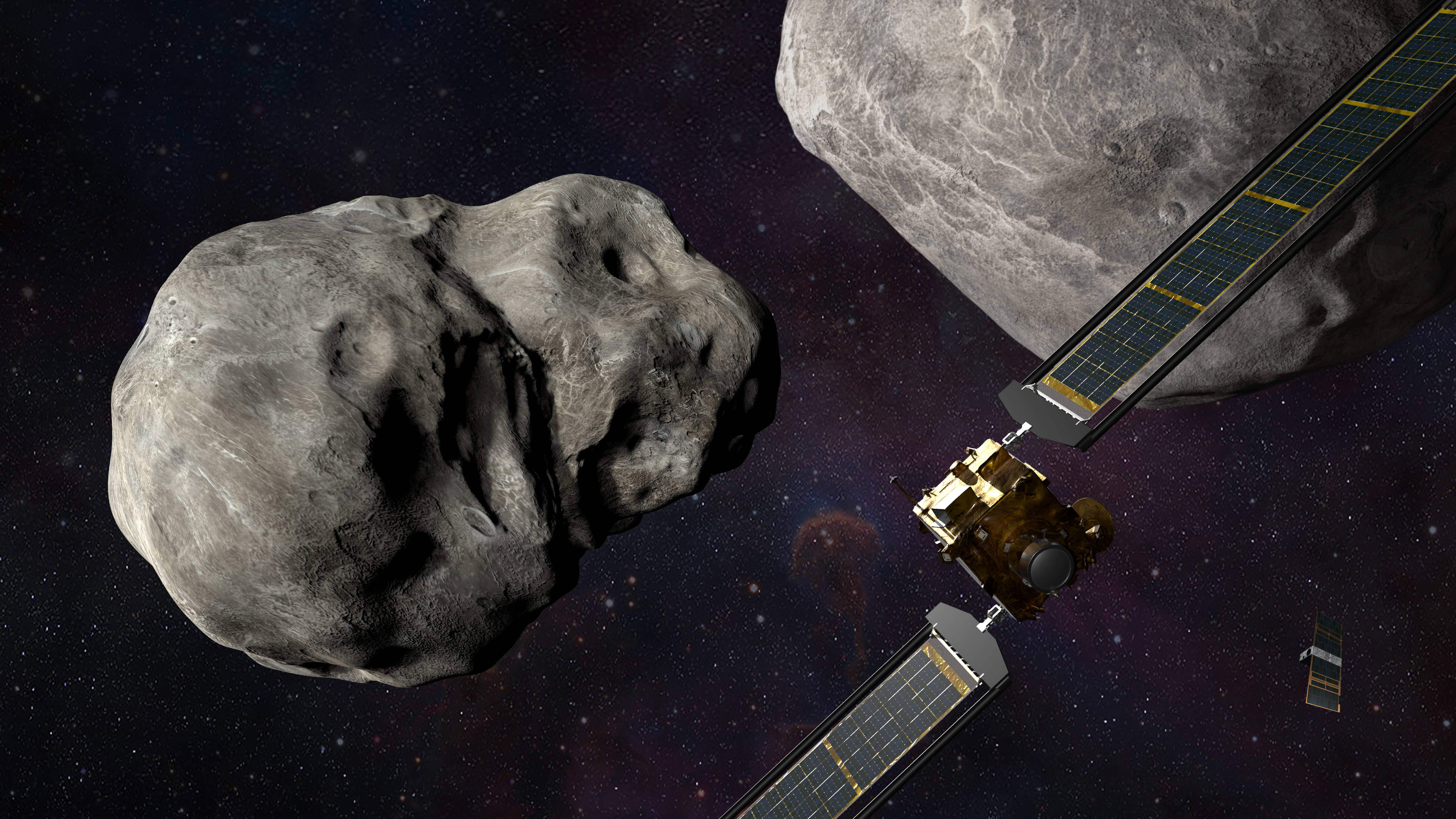
NASA's Hubble Space Telescope has spied a swarm of 37 boulders that were ejected from the asteroid Dimorphos after the DART spacecraft crashed into its surface in the world's first planetary defense test mission.
Last September, the 610kg probe collided head-on into the space rock with the goal of knocking it off its original orbit and changing the trajectory. The mission was declared a success when scientists confirmed that kinetic energy from the impact had moved Dimorphos closer to its parent asteroid Didymos, shortening the time it takes to orbit the larger rock by 33 minutes.
Dimorphos also shed a bit of its mass in the process. Observations from the Hubble Space Telescope revealed a group of 37 chunks of rock, ranging in size from three to 22 feet across, drifting slowly away from the asteroid, which likely flew from the surface of Dimorphos when the DART spacecraft barreled into it at about 14,000 miles per hour.
David Jewitt, a planetary scientist at the University of California, Los Angeles, who is tracking the changes in the Dimorphos-Didymos system after the collision, said the images are "some of the faintest things ever imaged inside our solar system."
"This is a spectacular observation – much better than I expected. We see a cloud of boulders carrying mass and energy away from the impact target. The numbers, sizes, and shapes of the boulders are consistent with them having been knocked off the surface of Dimorphos by the impact. This tells us for the first time what happens when you hit an asteroid and see material coming out up to the largest sizes," he said in a statement.
Up to two percent of the boulders on the asteroid's surface may have been kicked loose, Jewitt estimated. He believes that data from Hubble can be used to calculate the rough size of the crater leftover from the impact. "The boulders could have been excavated from a circle of about 160 feet across on the surface of Dimorphos," he said.
Astronomers will have to wait a little while longer as the European Space Agency gears up to send its Hera probe in 2024 to get a closer look at how DART changed the double asteroid system. By the time Hera arrives at the site in 2026, the swarm of boulders will likely have dispersed. "It's like a very slowly expanding swarm of bees that eventually will spread along the binary pair's orbit around the Sun," Jewitt said.
DART showed that it was possible to move an asteroid in space, but the Dimorphos-Didymos system was a test scenario. Hera will analyze the impact of DART's collision, and take more detailed measurements to better inform space agencies about planetary defense techniques should Earth face the serious threat of incoming asteroid collision in the future.
In the meantime, astronomers will have to make do with the tools they have to answer any questions leftover. It's not clear how the swarm of boulders were ejected or whether they were shed from the surface as part of a plume or if a seismic wave shook them loose.
"If we follow the boulders in future Hubble observations, then we may have enough data to pin down the boulders' precise trajectories. And then we'll see in which directions they were launched from the surface," said Jewitt. ®
Science - Latest - Google News
July 21, 2023 at 11:02PM
https://ift.tt/kj3yDzv
NASA's DART kicked up swarm of 37 boulders after Dimorphos asteroid crash - The Register
Science - Latest - Google News
https://ift.tt/b4BSvcO
https://ift.tt/jPXn6zf
Bagikan Berita Ini

















0 Response to "NASA's DART kicked up swarm of 37 boulders after Dimorphos asteroid crash - The Register"
Post a Comment